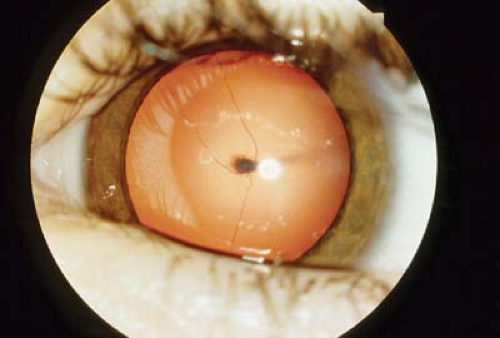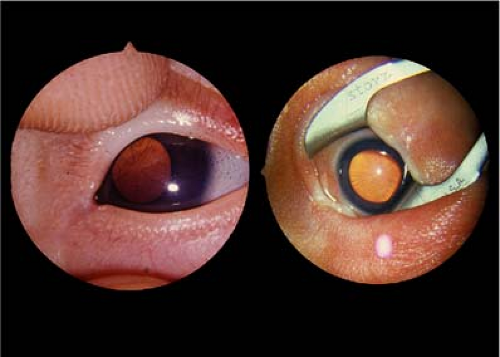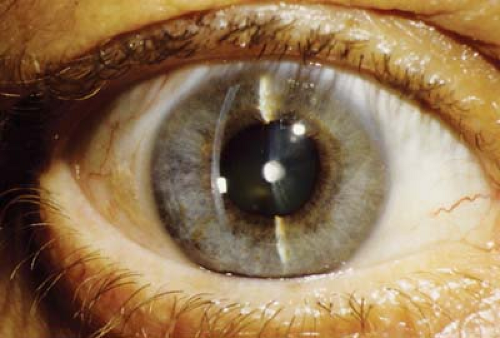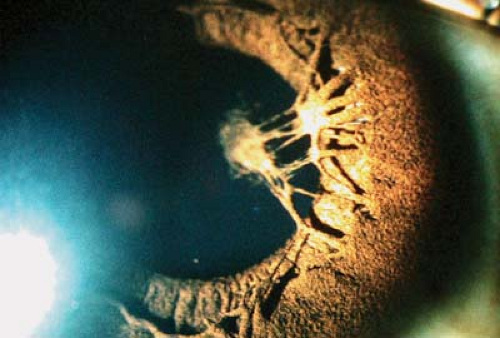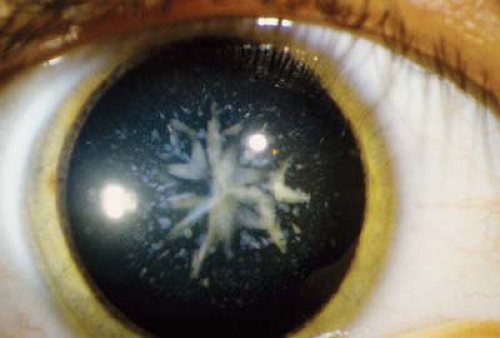Lens
Alex V. Levin
Thomas W. Wilson
David Rootman
The lens of the eye is derived from surface ectoderm, which invaginates into the optic vesicle during embryogenesis. This newly formed lens vesicle contains an outer capsule and is lined with primary lens epithelium. The posterior fibers elongate anteriorly to fill the vesicle. Secondary lens fibers emanate from the equatorial lens and migrate anteriorly and posteriorly to form the Y sutures. The primary lens fibers that are encircled by these secondary fibers are compacted to form the embryonic nucleus. The secondary fibers interior to the Y sutures make up the fetal nucleus. Additional fibers are laid down exterior to the Y sutures, forming the cortex. This complicated process is regulated by a variety of genes with differential expression in terms of location and time of development. The morphology of pediatric cataracts often reflects these stages of differentiation. Significant amblyopia and subsequent vision loss can occur from these opacities. Early surgery with optical correction is crucial for visual development.
Cataracts can be isolated genetic or nongenetic conditions or the result of systemic disease and systemic medications, in particular steroids. Cataracts may also be part of congenital syndromes. Heritable cataracts may be unilateral or bilateral. Attention must be paid to cataract morphology as this will provide information on cause, heritability, and management strategies. Some small cataracts may be managed medically, whereas more significant visual axis obstruction will require surgery.
The lens is suspended on the anterior vitreous face behind the pupil by the zonules (suspensory ligaments). A wide variety of systemic disorders, covered elsewhere in this atlas, may be associated with zonular weakness or dehiscence resulting in ectopia lentis. This chapter will focus on the causes of isolated ectopia lentis due to ocular malformation. Buphthalmos (Chapter 10: Glaucoma, Fig. 10.1) can also cause ectopia lentis. Isolated autosomal dominant and autosomal recessive forms may also be observed.
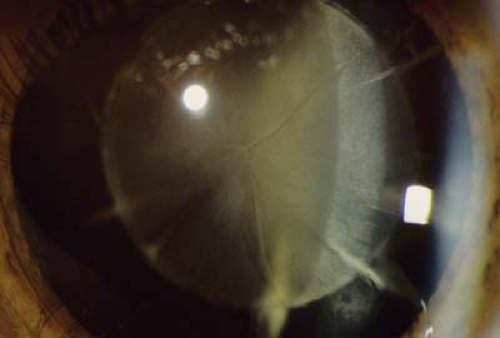 Figure 7.7 Lamellar Cataract
Stay updated, free articles. Join our Telegram channel
Full access? Get Clinical Tree
 Get Clinical Tree app for offline access
Get Clinical Tree app for offline access

|
